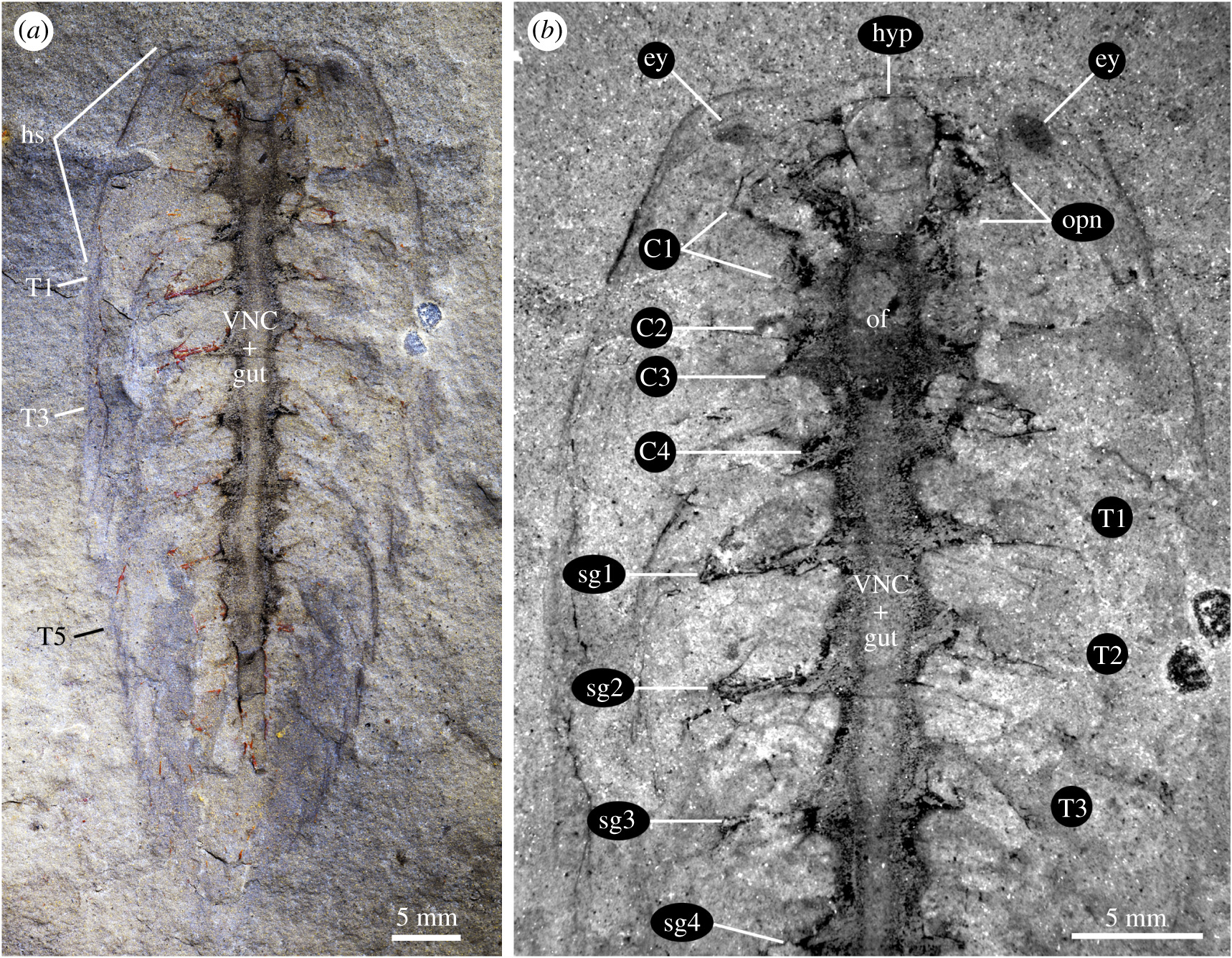©Copyright 2018 GEOSCIENCE RESEARCH INSTITUTE
11060 Campus Street • Loma Linda, California 92350 • 909-558-4548


Nervous system preservation in Alalcomenaeus sp. from the Drumian Marjum Formation. (a) KUMIP 204782 photographed under cross polarized light. (b) Detail of anterior half photographed with ultraviolet illumination. Cn, cephalic appendage nerves; ey, stalked eye; hyp, hypostome; hs, head shield; of, oesophageal foramen; opn, optic nerve; sgn, segmental ganglia; Tn, trunk tergites. Figure 2 in the original article, published under Creative Commons License 4.0. Image: J Orgeta-Hernandez.
Ortega-Hernández, J; R Lerosey-Aubril, S Pates. 2019. Proclivity of nervous system preservation in Cambrian Burgess Shale-type deposits. Proceedings of the Royal Society B 286:20192370; https://doi.org/10.1098/rspb.2019.2370
Summary. Two fossil arthropods from Cambrian deposits in Utah (the lower Cambrian Pioche Shale and the middle Cambrian Marjum Formation) have been found to have nervous tissue preserved. The fossils are both assigned to the genus Alalcomenaeus, which is believed to have been a small, bottom-dwelling predatory animal, reaching a maximum length of six cm (about 2 1/3 inches). It is classified as a member of an extinct group known as “great appendage arthropods,” which includes some other lower Cambrian arthropods such as Leanchoilia and Yohoia. Alalcomenaeus is well known from the Burgess Shale of Canada and is also reported from the Chinese Chengjiang fauna.
The Alalcomenaeus nervous system closely resembles the nervous systems of modern arthropods in general organization. A ventral nerve cord extends the length of the body, with branches to the body segments. The “brain” region has branches to the four stalked eyes, the “great appendages,” and three pairs of ventral appendages.
Preservation of nervous tissue is rare, so these fossils provide important information about the nature of the nervous system in Cambrian arthropods. Care was taken to exclude the possibility that the fossil traces might be remains of the digestive system rather than the nervous system. First, the fossil nerve cord was connected with the eye stalks, and second, it formed a loop around the location where the esophagus would fit. These are features of the arthropod nervous system and are not seen in arthropod digestive systems. Preservation of the nervous system in these fossils corroborates claims of preservation of nervous system tissues previously reported in several other Cambrian arthropods.
Comment. This report is significant because it shows that complex nervous systems were present in Cambrian arthropods and because it shows evidence of rapid preservation of the fossils. There is no evidence that the arthropod nervous system developed gradually through some kind of evolutionary development. As expected from a creationist viewpoint, fossil and modern arthropods have similar nervous systems. Rapid preservation is evident from the state of preservation of the entire animals, including the eyes, and from the abundant well-preserved fossils in the layers associated with the fossils. The design of the nervous system points to an intelligence acting in the creation of these animals, and the evidence of rapid preservation indicates a catastrophic event that buried and preserved these extinct marine creatures.